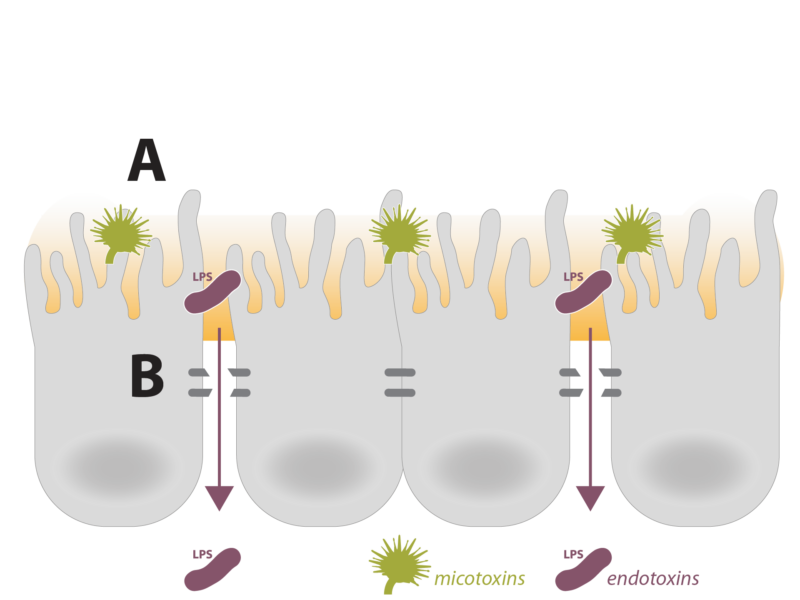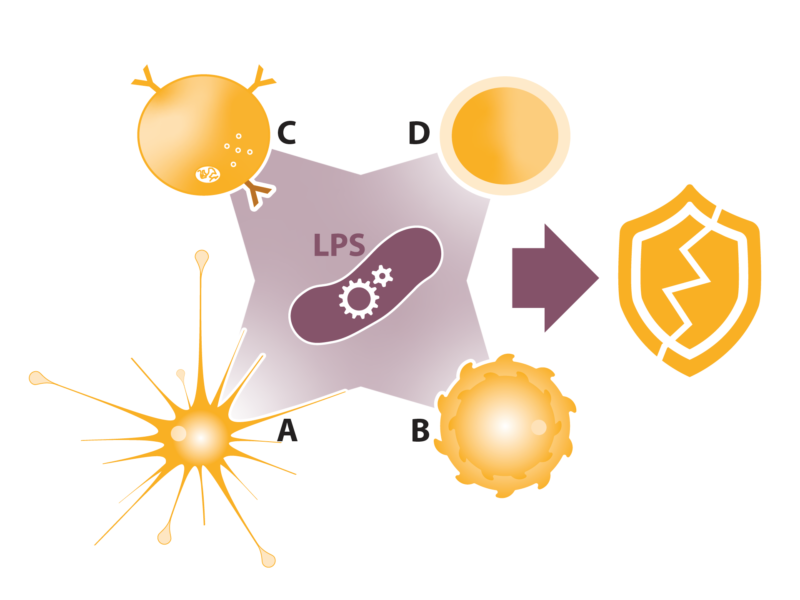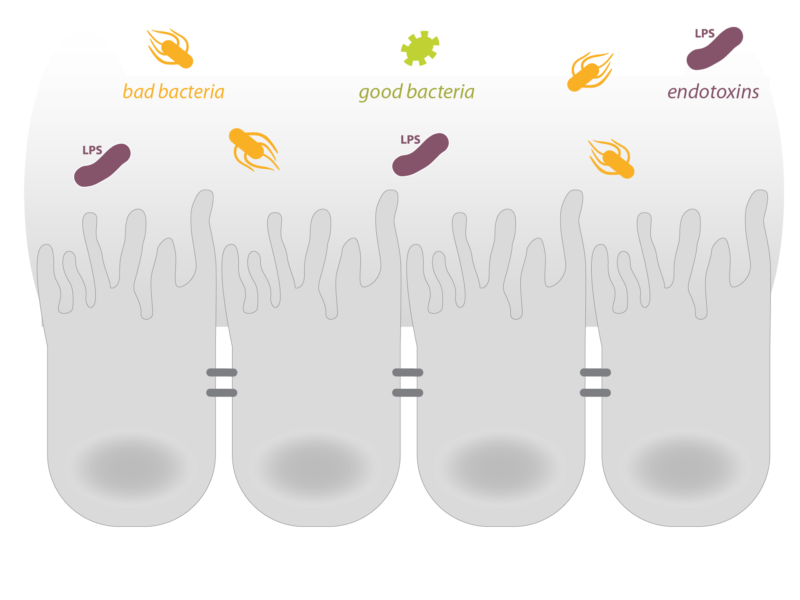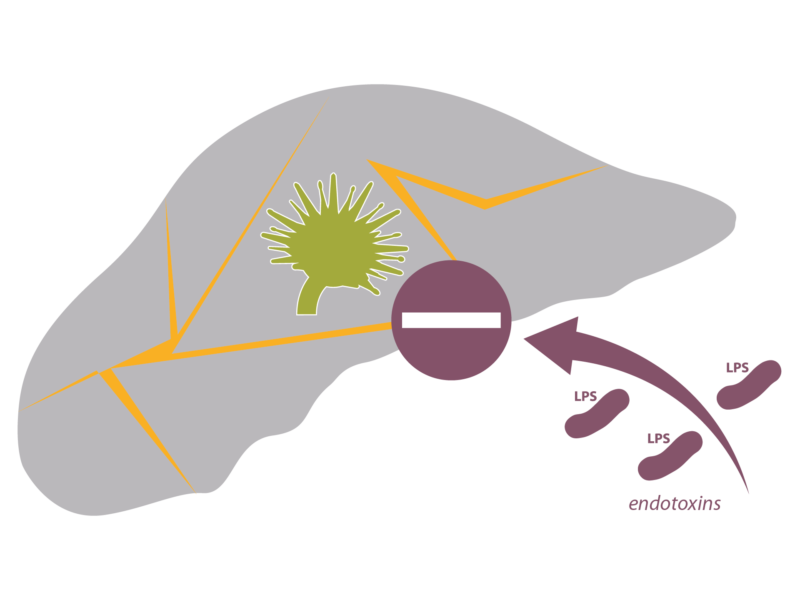The synergistic effect of mycotoxins and endotoxins
Mycotoxins and endotoxins
Mycotoxins and endotoxins are both toxins that present a health risk to production animals, albeit of different origins. Indeed, mycotoxins are secondary metabolites produced by molds growing on crops in the field or on feed ingredients during storage. Mycotoxins are ingested through contaminated feed and provoke a number of health issues such as a reduced immune function, organ damage and nervous and reproductive system problems. Endotoxins, on the other hand, are a component of the cell wall of Gram-negative bacteria. They are released into the environment, most importantly the gastrointestinal tract, when bacteria multiply or die. Once endotoxins pass the intestinal barrier, they trigger an inflammatory response, that will consume energy and nutrients meant for growth and production.
Mycotoxins and endotoxins are often present together in the gastrointestinal tract of production animals and cause severe economic losses. In addition, their adverse effect on the animals health and performance can be enhanced synergistically.
How mycotoxins aggravate the effects of endotoxins

Effect on gut barrier function
Mycotoxins negatively influence the intestinal integrity, which acts as a physical barrier preventing passage of pathogens and toxins. Indeed, mycotoxins such as DON, FUM and T-2 can decrease the production of mucins (A) and damage the tight junctions (B). Also, mycotoxins affect intestinal cell viability and reduce cell proliferation, leading to a reduced ability of the intestine to repair and replenish itself. This increased permeability of the intestinal epithelial layer promotes the leakage of not only mycotoxins but also of endotoxins into the circulation. Once in the circulation, mycotoxins increase the sensitivity to endotoxins and vice versa, reducing the minimum dose needed to generate an inflammatory response and to exert toxic effects in different organs.

Effect on immune system
Mycotoxins exert their immunotoxic effects through various mechanisms such as damaging the gut barrier, altering the development and functionality of different immune organs, decreasing the phagocytic ability of macrophages and dendritic cells and reducing the cell-mediated and humoral immune responses. As a consequence, this mycotoxin-induced immunosuppression results in an inadequate deactivation of endotoxins and a stronger inflammatory response against endotoxins, resulting in a reduced health and performance of production animals.

Effect on gut microbiota
The gut microbiota is a vast group of microorganisms including bacteria, viruses and fungi residing predominantly in the hindgut. A healthy and well-balanced microbiota is key for a healthy animal as the gut microbiota contributes to the intestinal integrity, the digestion of nutrients and supports the immune system. Mycotoxins affect the gut microbiota by causing an imbalance or dysbiosis in the bacterial population. They decrease the beneficial bacterial population and increase the pathogenic bacterial population. As a consequence of this dysbiosis and increased population of Gram-negative bacteria, more endotoxins are released in the intestinal lumen.

Effect on liver health
The liver is a vital organ that supports every other organ and system in the body. Indeed, the liver is involved in the digestion of nutrients, the metabolism of carbohydrates, proteins and lipids, the synthesis and breakdown of hormones and the storage of glucose and vitamins amongst other things. Next to that, the liver also is a key part of the immune system and important in the detoxification of toxic molecules, such as endotoxins. The mycotoxins ochratoxin A, trichothecenes, aflatoxins and fumonisins damage to the liver and compromise its detoxification capacity towards endotoxins increasing the risk of endotoxemia.
Strategies to prevent the synergistic effect of mycotoxins and endotoxins
To prevent the synergistic effects between mycotoxins and endotoxins in animals, Nutrex developed EndoBan FT. EndoBan FT is a combination product of our broad-spectrum mycotoxin binder, Starbind, our dedicated endotoxin reducer, EndoBan. EndoBan FT simultaneously combats mycotoxins and endotoxins by eliminating them from the gastrointestinal tract before they can exert their toxic effects.
References are available upon request.
Contact us for more information!
